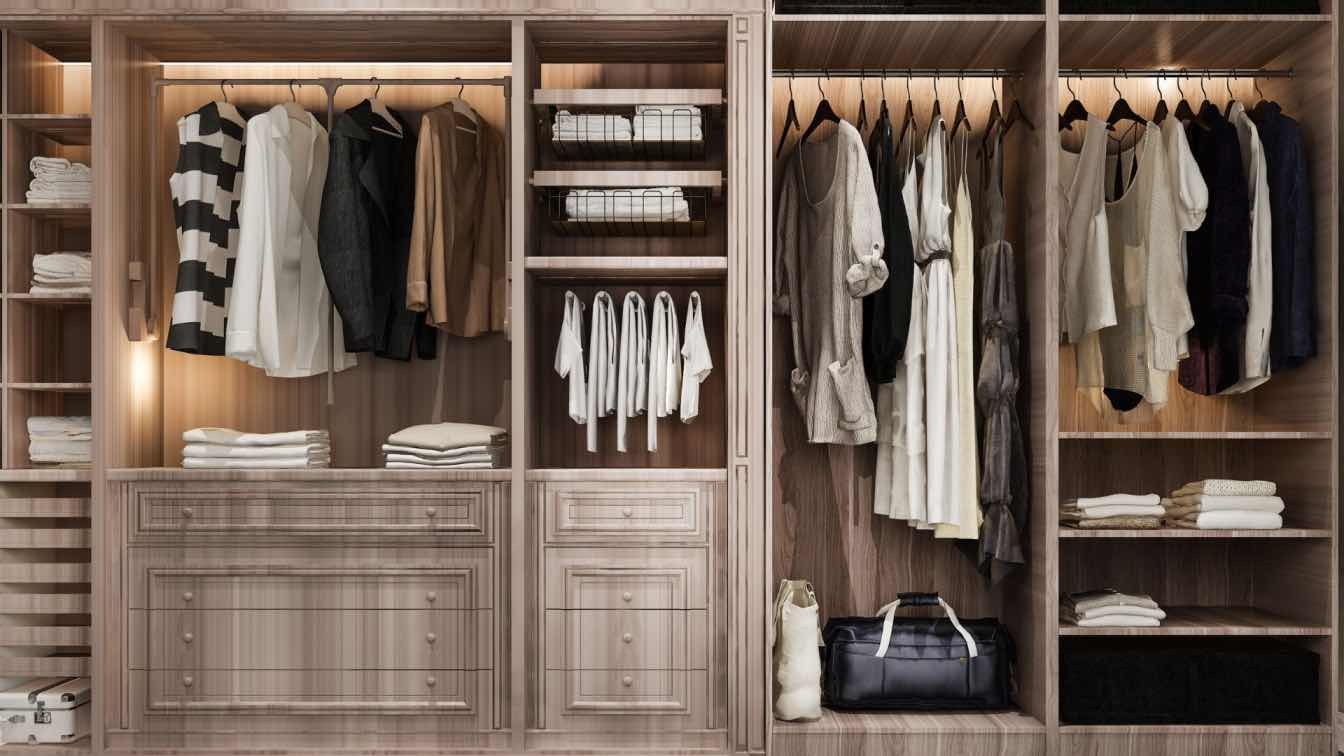Moving furniture overseas can be a daunting task. Whether it's your cherished antique chest of drawers or your favorite comfy couch, the process needs careful planning and execution. It's not just about getting from point A to B; there are multiple factors, like packing securely, navigating customs regulations, and coordinating with international shipping companies.
I've been through this maze before - many times in fact. I understand the challenges that come with transporting furniture across borders and oceans. There are numerous considerations to keep in mind: paperwork, packaging, shipping methods, and more.
Having a well-thought-out plan is key for successful overseas transport of furniture. This requires understanding what you're up against and preparing accordingly - for instance, different countries have distinct import rules that could impact cost and timeline. Being aware of such details can help you avoid unexpected hiccups down the road.
Key Factors to Consider in International Furniture Shipping
Planning to ship furniture overseas? I'm here to guide you through the process. In this section, we'll delve into the key factors that can make or break your international furniture shipping experience.
First off, it's crucial to think about the size and weight of your furniture. Heavier objects will naturally cost more to transport, but they also pose potential logistical issues. For example, certain countries have restrictions on the size and weight of packages allowed for import. So it's vital you do your homework on these limits before scheduling a shipment.
The second factor is packing appropriately for transit. You wouldn't want your precious antique table getting damaged en route because it wasn't packed securely enough! Proper packing materials like bubble wrap and sturdy boxes are must-haves when shipping items long distances. Additionally, considering professional packing services might be beneficial if you're unsure about how best to protect your belongings.
Next up: customs regulations. Every country has different rules regarding imports - some may require special documentation for certain types of goods; others might impose hefty duty fees on imported items. It's essential you understand these customs laws before initiating an international shipment.
Finally, selecting a reputable shipping provider plays a significant role in ensuring a smooth delivery process. Look for companies with proven track records in handling overseas shipments efficiently and safely.
To recap:
- Size and weight restrictions
- Appropriate packaging
- Understanding customs regulations
- Choosing a reliable shipping company
Keep these factors at the forefront of your planning phase when prepping for international furniture transportation, and I guarantee you'll feel more confident navigating this complex process.
The Role of Packaging in Overseas Furniture Transport
When it comes to overseas furniture transport, I can't stress enough the importance of effective packaging. It's not just about putting your items in a box and sending them off. There are several aspects to consider that can make all the difference between a successful delivery and an unfortunate mishap.
Perhaps the most crucial factor is protection. We're talking about furniture here, pieces that may have sentimental value or high cost attached to them. They need protection against potential damage during transit such as scratches, dents, water damage, or even total destruction. A well-packaged item will have layers of soft cushioning material like bubble wrap or foam around it, followed by stiffer protective elements such as corrugated cardboard or wooden crates for additional resilience.
Next up is space optimization. In overseas transport, every inch counts - literally! Freight charges are often calculated based on either weight or volume (whichever is higher), so efficient packaging plays a vital role in minimizing these costs. For instance:
|
Type of Furniture |
Without Optimization |
With Optimization |
|
Sofa |
4m^3 |
3m^3 |
|
Dining Set |
2m^3 |
1.5m^3 |
These numbers clearly show how smart packing strategies can help cut down on freight costs significantly.
Another key aspect to remember when packing furniture for overseas transport is compliance with regulations. Different countries have different rules regarding importation of goods - including what kind of packaging materials are allowed or prohibited (some nations ban certain types of wood for example). Falling foul of these laws could lead you into some serious trouble!
Let's also address the environmental impact here - something we should all be mindful about today more than ever before. Opting for eco-friendly packing materials such as biodegradable bubble wrap and recyclable cardboard can make a big difference.
- It reduces the carbon footprint of your shipment.
- Helps in waste management at the destination.
- And let's not forget, it's simply the right thing to do for our planet.
In short, the role of packaging in overseas furniture transport is monumental and multifaceted. Whether it’s protection of your valuable items, cost-effectiveness, compliance with laws, or environmental responsibility - each aspect has its own significance. So next time you plan an international move involving furniture, remember - pack smart!
Evaluating Costs Associated with Foreign Furniture Delivery
Let's dive into the nitty-gritty of international furniture shipping costs. It's not just about how much you'll spend, but where those dollars are going. Understanding these expenses will help you make informed decisions and potentially save you money in the long run.
Transportation is, of course, a significant part of the cost. It's important to remember that your furniture isn't taking a direct route from point A to point B. There are numerous stops along the way - loading and unloading at various ports, customs clearance procedures, and finally delivery to your doorstep.
The size and weight of your items also play an enormous role in determining costs. Larger, heavier pieces will be pricier to ship overseas simply because they take up more space on transport vehicles and may require special handling.
Here are some elements that contribute towards foreign furniture delivery costs:
- Freight charges
- Insurance costs
- Packaging expenses
- Customs duties and taxes
- Storage fees (if necessary)
Plus there could be additional fees such as fuel surcharges or peak season charges depending on when you're moving. These are just some examples; every case is unique based on the specific circumstances of each move.
But it's not all doom and gloom! You can mitigate some of these costs through careful planning. For instance, consolidating shipments or scheduling during off-peak seasons can result in quite a bit of savings.
To sum it up: knowledge is power when dealing with international shipping fees! Understanding what goes into these prices enables us to budget effectively for our overseas furniture transportation needs.
How to Choose a Reliable Overseas Furniture Transport Company
When you're moving furniture overseas, the last thing you'd want is for it to get damaged or lost in transit. That's why choosing a reliable transport company is paramount. Here are some tips to help you make the right choice.
Firstly, it's essential to look at a company's experience and reputation. Companies that have been in business for several years usually have the knowledge and expertise required for safely moving furniture overseas. You can check out online reviews or ask for references to gauge their track record. Companies that use the correct lifting system for modules minimise the risk of damage during handling and transport. This careful approach helps ensure that your furniture arrives safely at its destination, regardless of the distance.
Secondly, don't forget about accreditation. Legitimate companies will be members of internationally recognized associations like FIDI (Fédération Internationale des Déménageurs Internationaux). These organizations enforce strict quality standards which member companies must adhere to.
Next up, consider insurance options. Despite best practices followed by companies, unforeseen circumstances can happen and your furniture might end up damaged or lost. Hence, it's important that the company offers comprehensive insurance coverage for your goods.
Moreover, pay attention to their customer service quality - how promptly they respond to inquiries and how clear and detailed their communication is about pricing, services etc., speaks volumes about their professionalism.
"Finally yet importantly, compare quotes from different moving companies but remember - cheapest isn't always best! It could mean fewer services or lower safety measures so ensure what all is included before making a decision."
In summary:
- Check experience & reputation
- Look for accreditation
- Ensure they offer comprehensive insurance
- Assess their customer service quality
- Compare quotes keeping in mind what’s included
Choosing an overseas furniture transport company doesn’t have to be stressful – with these tips in mind, I'm confident you’ll find one that suits your requirements perfectly!
Navigating Customs and Regulations for International Furniture Shipping
When it comes to moving furniture overseas, there's more to consider than just the physical logistics. An important part of the process is understanding and navigating through customs and regulations. These rules can vary greatly depending on your destination country, making research a vital first step.
In most cases, you'll need to fill out paperwork declaring what you're shipping. This typically includes details like the value of each item, its origin, and sometimes even its purpose. It's essential to be accurate with this information - providing false or misleading statements could lead to penalties or delays.
It's also worth noting that some countries have specific restrictions on certain types of furniture. For example:
- Some nations restrict imports of certain wood species or finishes in an effort to protect local industries or preserve natural resources.
- Other countries might have strict guidelines around antique furniture due to cultural preservation laws.
Understanding these nuances will help you avoid unexpected obstacles during your move. To make things easier, many people opt for hiring professional international movers who are familiar with these processes.
One last thing I'd stress is the importance of insurance when shipping furniture internationally. Accidents can happen - from minor damages during transport to lost shipments - so having coverage helps mitigate potential financial losses.
Navigating customs and regulations for international furniture shipping may seem daunting at first glance but don't let that stop you! With proper planning and preparation, it can actually be a smooth process. Remember: knowledge is power when it comes to dealing with customs!
Handling Insurance Matters in Overseas Furniture Transportation
I can't stress enough how crucial it is to nail down the insurance details when you're transporting furniture overseas. It's not just about covering the cost of the furniture, but also ensuring any potential damage or loss during transit doesn't leave you out of pocket.
Firstly, let's talk about marine cargo insurance. This type of insurance is specifically designed for goods transported over water. It typically covers damage caused by loading/unloading, weather-related incidents, and even piracy. A little known fact - did you know that as per a 2020 report from ICC International Maritime Bureau (IMB), there were 195 incidents of piracy and armed robbery against ships worldwide?
|
|
Number of Incidents |
|
2019 |
162 |
|
2020 |
195 |
This shows a significant increase from the previous year!
Secondly, consider getting all-risk insurance. As its name suggests, this coverage protects against all risks unless specifically excluded in the policy terms. Some common exclusions include ordinary wear and tear, improper packing by owner (that could be you!), and inherent vice (internal decay or destruction).
Here are some things to keep an eye on when dealing with insurance matters:
- Always read your policy before signing: Know what's covered and what isn't.
- Understand deductibles: Most policies have a deductible — that’s the amount you’ll have to pay out-of-pocket for each claim before your insurer pays anything.
- Consider supplemental coverages: You might want additional protection for high-value pieces or if your shipment will be stored somewhere along its journey.
To sum up my insights on handling insurance matters in overseas furniture transportation - it’s not something to overlook or rush through. By paying attention to these points now, I believe you'll save yourself potential headaches later on!
Conclusion: Simplifying Your Overseas Furniture Transport Experience
Shipping furniture overseas might seem like a daunting task, but it's certainly not impossible. I've found that with the right planning, preparation and assistance from reliable international shipping companies, you can make this process significantly smoother.
First off, it's essential to understand what you're getting into. Shipping furniture abroad involves various factors such as packing, loading, transportation, customs clearance and delivery. Each stage requires careful attention to ensure your items arrive in pristine condition at their destination.
One of the most critical aspects is proper packaging. When I transport furniture overseas myself or advise others to do so, I always emphasize securing items adequately by using bubble wrap and sturdy boxes. It doesn't just protect your furniture from damage during transit but also helps maintain its value.
Next up is finding a reliable shipping company with experience in international logistics and a good reputation for handling furniture shipments. They'll handle all the heavy lifting (quite literally), navigating through complex customs procedures and ensuring your items reach their destination safely.
Here are some tips to simplify your overseas furniture transport experience:
- Thoroughly research different shipping companies before making a decision.
- Ensure that the chosen company provides insurance coverage for your items.
- Work out all costs upfront - avoid any hidden charges.
- Document everything – take photos of your items before they're shipped.
And there we have it! While moving furniture across borders might be challenging, it's definitely achievable if you approach it correctly. With appropriate preparation and professional help from an experienced international moving company, you can rest assured knowing that your beloved pieces will reach their new home safe and sound.
Remember: when faced with such tasks—whether big or small—knowledge is power. So arm yourself with information and confidence...and let’s conquer those international waters together!





